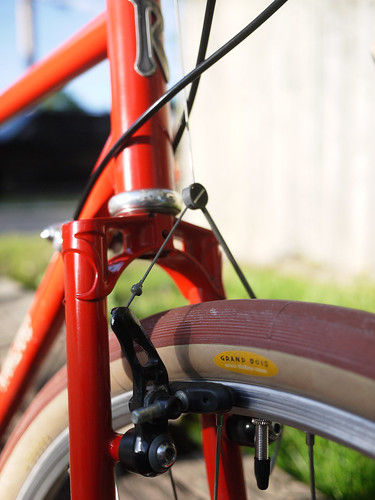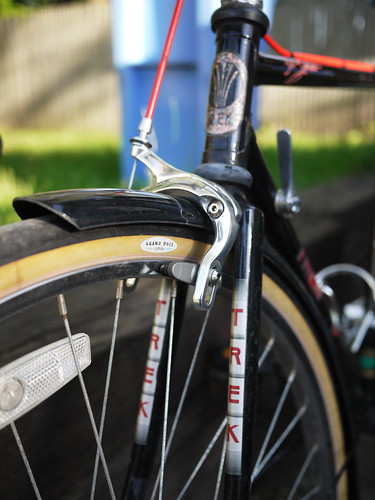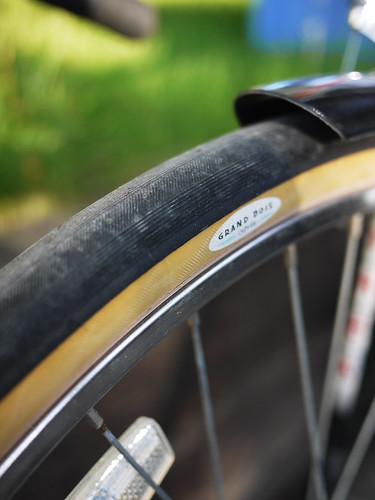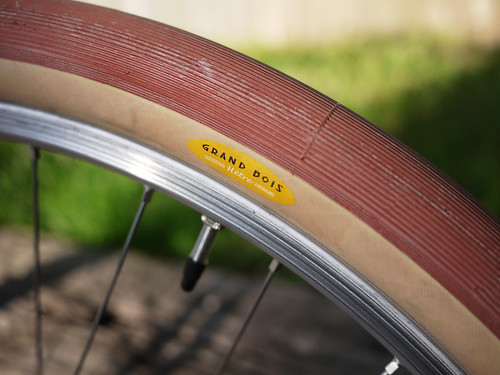
Today, most manufacturers design modern road bikes so they do not accept a tire wider than 700x25c, with tight brake and seatstay clearance that also precludes fender mounting. This is fine for a race bike (though I'd argue room for 28mm tires would be beneficial there too), but a 23mm wide tire is really not ideal for commuting or multi-day rides. Those shopping for a road bike with this in mind would do well to check out brands like Surly, who make steel frames with clearance for wider tires, and cyclocross bikes, which are designed to fit up to 700x35c tires and typically have cantilever brakes. Many older steel bikes did have more clearance for wide tires and fenders, and if you feel like it, a tight frame can get more clearance when converted to the 650b wheel size, which you can read about here.

Even experienced cyclists will repeat the fallacy that skinny tires are faster than wide tires, but tests at Bicycle Quarterly have shown that on imperfect surfaces like, say, Lansing's roads, a well-made ~30mm tire is actually fastest. The reason for this is that the cyclist loses a fair amount of speed to the road vibration that occurs with these narrower tires. Above 30mm, tires typically cannot hold the high pressures that fast road riding requires and tires get heavier, and so speed again starts to fall off, but with an increase in plushness.

A high-quality tire at this width can ride like a dream, and some of the best come from Japan's Grand Bois. They specialize in the 650b wheel diameter, which falls about halfway between 26" and 700c wheels, which no major manufacturer that I can think of supports, but there has been a recent resurgence of interest in thanks in part to companies like Rivendell, Grand Bois, and many custom framebuilders. My wife has been riding on a 650b-converted Trek 560 shod with Grand Bois Cypres 30mm tires for a couple years now, and has nothing but positive things to say about them, and these tires are also available in a more conventional 700cx30 size. The 42mm wide Grand Bois Hetre tires have also proven to be a good combination of speed, comfort, and feel. My friends kid me that I'm riding my beach cruiser when I put the Hetres on my Rawland Sogn, but the tires feel and ride great, plain and simple.

High-end tires like those made by Grand Bois and Challenge are not cheap, running at times well above $100 for a pair, and while folks have shown they are willing to shell out big bucks for a wheelset, pedals, and the like, tires are often a component that people feel they can spend less on. Panaracer's Pasela and Schwalbe's Marathon tires are some of the more moderately priced entries on the market and are available in a wide variety of sizes. These tires come in kevlar-belted varieties for puncture-protection, but in my experience these Kevlar belts actually produce a stiffer ride, and do not provide enough puncture protection to make the trade-off worthwhile.


1 comment:
Thanks so much for this post. I have an older Fuji road frame and I've been riding with 23mm tires. I definitely want to try to fit up to 28mm ones on there and compare the ride quality. I've been afraid of fat tires for so long because of the slow myth. Can't wait to try them out!
Post a Comment